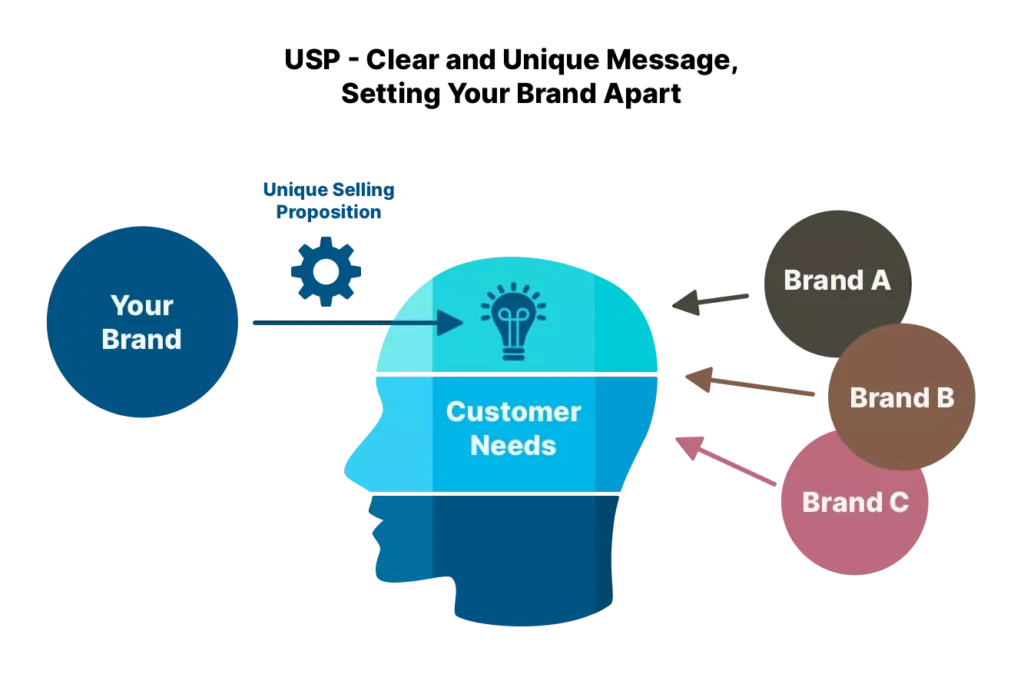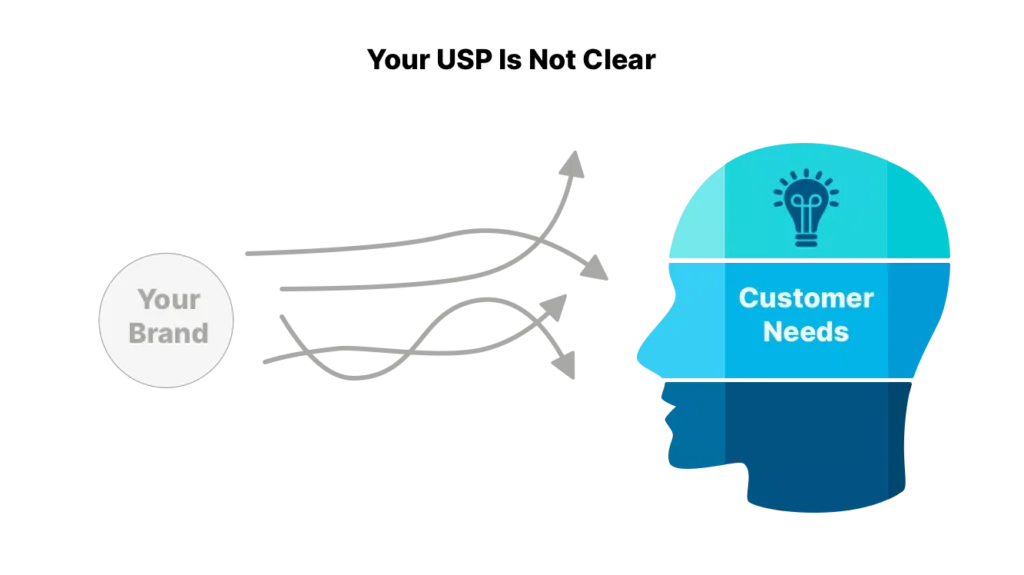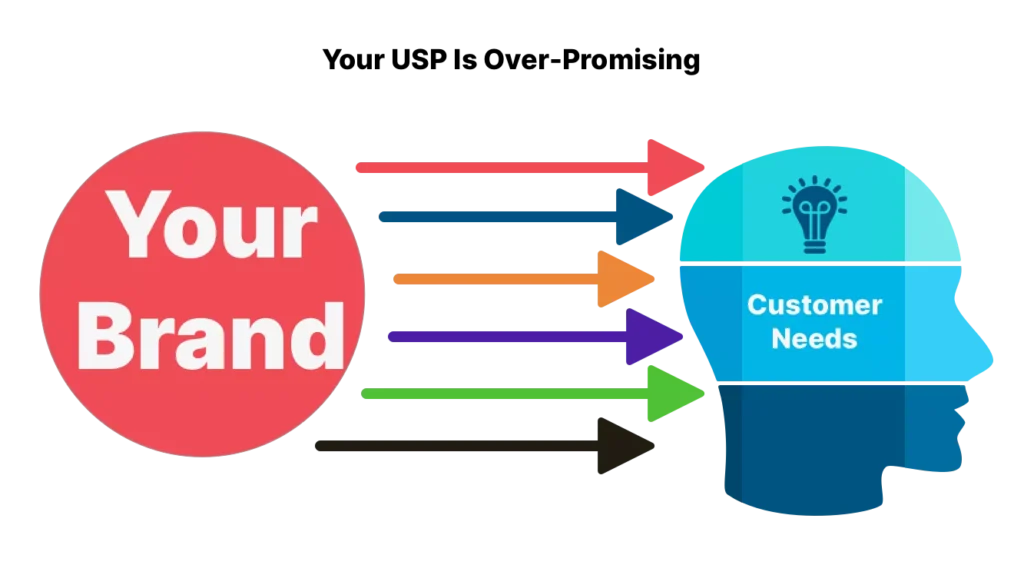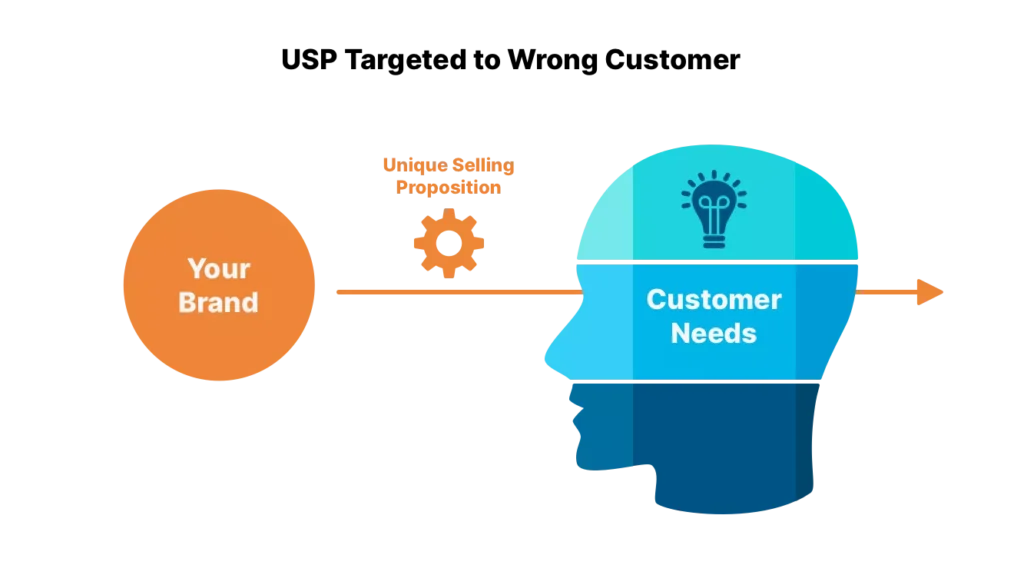Imagine you’re buying a house, a car, or something else specific that you really need.
You’ve narrowed it down to a few potential options, and now you’re trying to decide which one to choose.
Here’s the thing: to make the final decision, you need to find something that perfectly fits your expectations:
A clear and unique message or idea that sets this option apart from all the others and makes you think it’s the perfect fit for you! That’s what it is.

We marketers call it a USP or unique selling proposition which is a result of your brand’s Differentiation and Positioning.
But let’s just get straight to the business.
Now you’re selling your products or services. Your clients too need a reason to choose you over one of your competitors. Which exact and specific message will you use? What is different about your solution that solves their needs better than the other alternatives?
If you’re an entrepreneur asking yourself “Why don’t I have enough clients?” – probably, here is the answer to your question.
Without a unique selling proposition, your business/product/service will be “just another place to forget about”.
Let’s see how we can get you a brilliant USP to get your buyers to you.
First, adopt this idea: You are not that important to them!
People don’t think about your product much. They don’t care about your brand and your service and your company and yourself. People think about themselves and their ultimate goals.
Your clients consider your product and your service just as a tool to reach their goals, solve their problems and themselves be the superheroes.
Second, this may sound surprising: Often, people don’t know what they want.
And they can’t express these thoughts clearly to themselves.
Your clients are not always explicit and honest with themselves.
Remember yourself: Often you know (or feel) you need to buy this really cool thing,
but you don’t explicitly articulate to yourself why.
So, the way people make their buying decisions is always a lot of magic that the best marketing minds are still trying to solve (and not always succeed).
Powerful USP reaching their hearts and minds will help them understand you’re important to them. Marketing researches show that effective USPs boost conversion rates (from visitor -> to customer) by a considerable margin.
It makes sense to start welcoming your visitors with your USP at the Interest Stage of the funnel (read more about the funnel here) when they stop by your website and say: “OK. Show me more!”
Also, note that a business can have more than one USP. You can use them together or separately depending on what you want to tell to each customer.
If you’re an entrepreneur who’s starting a new business and you’d like some more clarity regarding growth, product development, and launch strategy…
You’ll LOVE my free eBook: The 8D Framework To Launch Your Business!
It’s a step-by-step guide (still easy to read though) designed to show you HOW to design your product, how to launch it, and how to scale it.
Finally understand the exact steps you need to take to grow your business here:
We’ll emphasize this again, people do not think about your brand every minute (unless they are your mom)! Consumers think about themselves and want to solve their problems with a product/service. They will never buy anything that offers zero benefits for them.
There are three main ways how you can fail to deliver your USP to the target audience

You are not clear. People just don’t understand what you’re trying to say.
Your website or advertising banner is a mess.

You’re talking too much.
You say you’re the best at everything, but people don’t believe you or get overloaded with information.

You’re delivering your message to the wrong people.
For example, you’re trying to sell a luxury watch to a guy who just lost his job.
Here are some examples that you can use to draw inspiration for identifying your own USPs.
Awesome USPs can be based on your business strategy: Price, Time, Quality, or Variety – check this article as well. These are the best things about your business that make customers want to buy from you.
Next one to read: How to Build a Powerful USP.

Email subscription is available ONLY TODAY (oh, okay, and tomorrow).
Surely, we respect your inbox! Unsubscription works every day.

We’d love to tailor your experience — which of these best describes you?